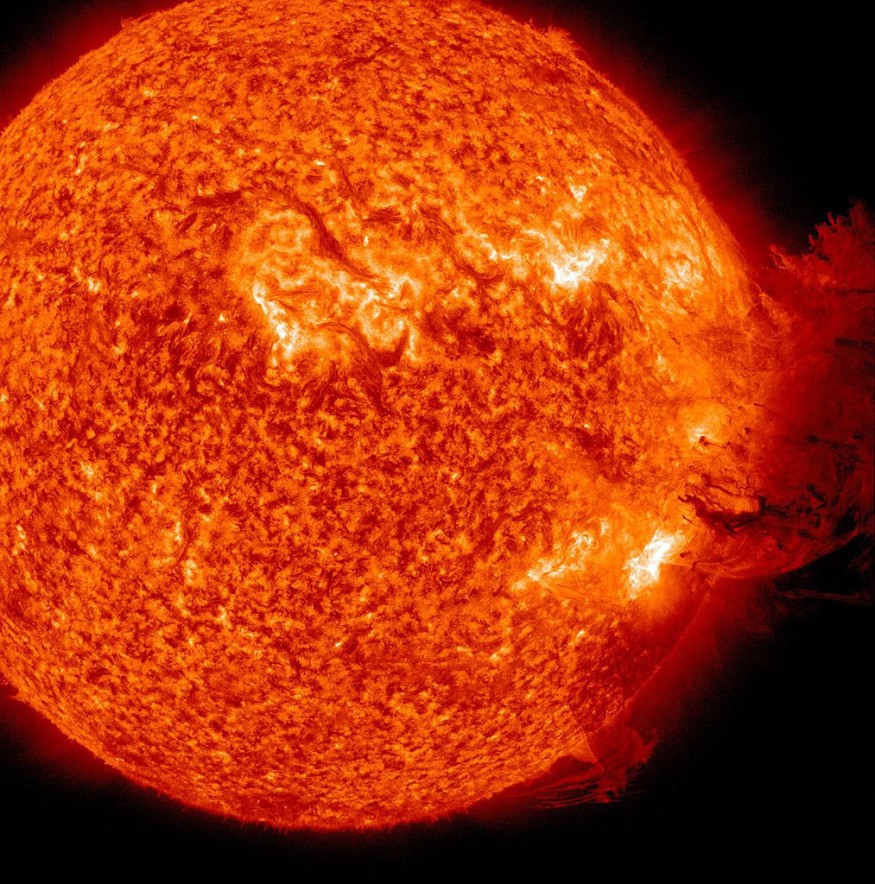G5 storms are among the most powerful-and possibly dangerous-space weather occurrences. But what is a G5 storm, and what might it do to the Earth?

Space Weathers
The phrase "space weather" refers to the occurrences in the space environment between the sun and Earth and beyond. Solar activity causes it, and it may show itself in various ways, including solar flares, coronal mass ejections, and geomagnetic storms, to name a few.
While the Earth's magnetic field shields us from charged particles generated by the sun, space weather may influence our planet, disrupting life and technological infrastructure both in space and on the ground.
Affecting The Planet
Changes in the solar wind-a stream of energetic, charged particles that flows out of the sun-and the interplanetary magnetic field create severe perturbations in the Earth's magnetic field.
The nature of the Earth's magnetic field may be affected by variations in the solar wind, resulting in geomagnetic storms that can last anywhere from hours to days.
CMEs
Coronal mass ejections (CME)-large expulsions of plasma (the fourth basic state of matter) and magnetic fields from the sun's corona's atmosphere are common sources of these storms.
High-speed solar wind streams can also cause geomagnetic storms. However, they are usually less severe than CME-related occurrences.
The ionosphere-a component of the Earth's upper atmosphere that begins approximately 50 miles above sea level-is heated and distorted by geomagnetic storms. Long-range radio communication and global positioning systems may be affected (GPS).
These storms can damage satellite electronics. These phenomena may cause electrical grid spikes on the ground, resulting in blackouts.
Read also: CMEs: Solar Particles Can Create Aurora Displays, But May Also Cause Worldwide Disruptions
G5 Storms

The National Oceanic and Atmospheric Administration (NOAA) has developed a system for grading geomagnetic storms and their possible consequences, which range from G1 (small) to G5 (major) (extreme).
An associate professor of mechanical and aerospace engineering at West Virginia University, Piyush Mehta, told Newsweek, "Essentially, think of it as a scale for how violent the storm will be."
"The G5 is likely to influence everything we know about present space weather issues," he added.
While mild geomagnetic storms are unlikely to influence the Earth significantly, a G5 storm might have catastrophic consequences.
Some electrical grid systems, for example, might entirely fail, resulting in widespread outages. Meanwhile, satellite navigation systems might have problems for days. According to the NOAA, aurorae may be visible as far south as Florida and southern Texas.
G5 storms are uncommon, but they can wreak significant damage when they do happen. The Carrington Event of 1859 was the largest geomagnetic storm ever recorded, causing telegraph networks worldwide to fail and even setting fires in some telegraph stations.
Possible Disaster
"We didn't have a lot of IT infrastructure when it happened," Mehta added. "Back then, we just had telegraph wires and stuff like that; we didn't have electricity lines, so a replica of the Carrington Event today might wreak $2 trillion in damage."
"Various models have been devised to forecast how probable or how frequently such catastrophes are likely to occur," he explained. "And most models anticipate that a Carrington-type event will happen every few hundred years or so; nobody knows when it will happen, so it's better to be prepared and enhance our capacity to forecast when it will happen."
According to Mehta, storms stronger than the Carrington Event may occur at some point in the future.
"There's always the uncertainty; we just don't know how bad the storm will be," he explained.
While it's impossible to forecast when a geomagnetic storm will occur, they're more likely to happen during a solar maximum-a moment in the sun's 11-year cycle when it's most active.
Related Article : Can We Survive a Catastrophic Solar Storm? What to do When a Solar Flare Hits Earth
For more cosmic news, don't forget to follow Nature World News!
© 2026 NatureWorldNews.com All rights reserved. Do not reproduce without permission.





